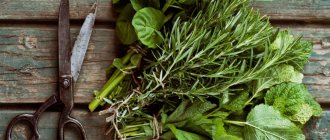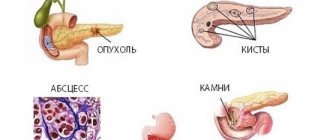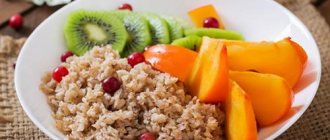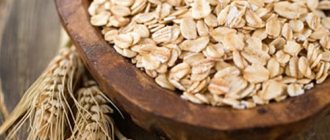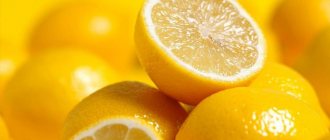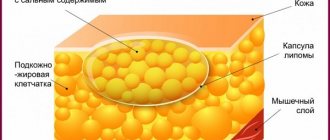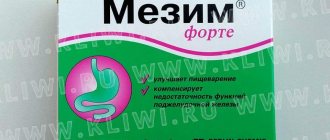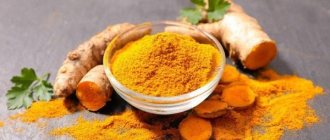Diseases affecting organs
Among all diseases of the digestive system, the most often diagnosed are:
- diseases of the liver and gall bladder (cholelithiasis, hepatitis, cholecystitis, hepatosis, cholangitis);
- inflammatory processes of the pancreas;
- acute and chronic diseases of the stomach and duodenum.
Damage to one of the organs of the digestive tract is accompanied by functional impairment and inflammation of the neighboring organ. The patient often complains of heaviness in the stomach, nausea, vomiting, diarrhea, and severe pain.
Features of the pancreas
The purpose of the pancreas (PG) is to produce special enzymes responsible for the breakdown of fats, proteins and carbohydrates that enter the body with food. The normal functioning of the pancreas allows food to be properly digested and absorbed fully.
One of the main functions of the liver is protective, which filters substances coming from the intestines and thus cleanses the blood of toxins. In addition, the liver decomposes glucose and produces useful substances that are necessary for proper functioning.
If organs malfunction, serious problems begin in the body. There are two main features to note here:
- disorders of these organs have similar symptoms;
- Initially, the manifestation of the disease is not very noticeable.
Due to these features, it is important not to miss the onset of the disease and start treatment on time.
The main reasons for the development of pathologies
The incidence of pathologies of the digestive system is influenced by many factors, but usually these are:
- consumption of low-quality food;
- abuse of nicotine and alcohol;
- infectious diseases, including chronic ones;
- genetic predisposition;
- stress;
- long-term use of medications.
The cause of pancreatic pathology is most often inflammation of the gallbladder, the presence of calculi (stones) in it, poor diet, and frequent consumption of fatty foods.
To restore the function of the affected organ, improve the patient’s well-being and activate digestive processes, doctors prescribe complex conservative treatment, including diet therapy and the use of folk recipes.
It is advisable to use traditional medicine during the period of remission, when the acute inflammatory process subsides and the recovery processes occur much faster.
Courses of herbal treatment can also be carried out for preventive purposes during the off-season, when all chronic diseases worsen.
In any case, before starting treatment, it is necessary to consult a gastroenterologist, who will assess the severity of the pathological process and also select the most effective course of herbal treatment.
Features of pregnancy and childbirth
The course of pregnancy with the simultaneous presence of hepatitis and pancreatitis has its own characteristics. In the first months, toxicosis often develops, which is much more severe than in healthy women. Nausea and repeated vomiting are observed, aggravated by eating fatty foods. There is a decrease in appetite and body weight. The condition stabilizes somewhat in the second and third trimesters, and if there are no complications, then such a woman is not prohibited from giving birth.
When inflammation worsens, doctors often miss the disease because it resembles toxicosis. Therefore, it is important to immediately consult a doctor at the slightest deterioration of the condition. This requires additional consultation with a gastroenterologist or therapist and tests (stool, biochemical blood test).
Pregnant women need to follow a diet and undergo treatment, just like other patients. But in this case, it should be taken into account that some drugs can affect the development of the fetus.
If an acute form of pancreatitis develops during gestation, then in this case doctors recommend interruption before 12 weeks. Caesarean section is performed only in cases of extreme necessity, provided that an infectious complication is excluded. Childbirth is best done naturally.
In the case when a pregnant woman has pancreatitis due to hepatitis caused by a virus, the management of pregnancy depends on the type of liver pathology. Some types of infectious diseases can pose a danger to the life and health of both the mother and the unborn child.
Viral hepatitis B, C, E and D are the most severe. Against their background, liver failure, intrauterine fetal death, and maternal death as a result of intoxication or bleeding during childbirth can develop.
Herbs beneficial for the liver and gallbladder
Among the wide range of herbs for the treatment of the liver and pancreas, the following herbs are most often used:
- milk thistle, or milk thistle;
- tansy;
- St. John's wort, or common;
- creeping thyme (thyme);
- yarrow;
- pharmaceutical camomile;
- dandelion root;
- peppermint.
These herbs are used as a single drug to treat inflammatory processes of the liver, pancreas, and gall bladder. But it is much more effective to use herbal infusions, where each component enhances the effect of each other.
Hepatitis
Faced with a disease such as hepatitis, the patient wonders how to effectively treat the liver and pancreas. Folk remedies used in complex therapy must have hepatoprotective, anti-inflammatory, antiseptic and analgesic effects.
Such medicinal herbs include chamomile, calendula, and Rhodiola rosea root. A decoction of these medicinal plants relieves acute inflammation, eliminates bile stagnation, and helps cleanse the liver. We should also highlight the chicory plant, which is used in cooking as a coffee drink. The root of the plant has effective hepatic-restorative properties. Herbalists recommend taking a decoction or alcohol tincture of chicory root for 3 weeks.
The course of herbal treatment lasts no more than 4 weeks. If the course is shorter, the body will not be completely cleansed, and the affected liver cells will not have time to recover. If the treatment lasts more than 30 days, then there is a high risk of addiction, as a result of which the liver cells will become insensitive to the effects of natural medicines.
Biliary dyskinesia
This is a disease that is associated with impaired motility of the gallbladder, as a result of which insufficient or excessive amounts of bile enter the duodenum. For biliary dyskinesia, doctors also recommend using folk remedies for treatment. An infusion or decoction of the vegetative organs of barberry has proven itself well. To prepare the product, take 1 tablespoon of raw material per 200 ml of water, place in a water bath for 30 minutes, leave, filter and drink 100 ml 3 times a day before meals.
For dyskinesia, it is useful to drink yarrow grass, wormwood, celandine, fennel seeds, hop cones, taken in equal proportions. For 500 ml of boiling water you need to take 2 tbsp. collection, pour boiling water. After infusion and straining, drink 35 ml three times a day, 15 minutes in advance. before meals.
Cholecystitis
The inflammatory process in the gallbladder is also stopped thanks to the remedies recommended by traditional treatment. To eliminate the symptoms of inflammation, it is recommended to drink a decoction of oregano herb daily, 3-4 times a day, 50 ml.
To treat cholangitis and cholecystitis, not only pharmaceutical drugs are used, but also herbal preparations, tinctures and decoctions. You can buy a ready-made herbal mixture in the pharmacy chain, but if you have high-quality natural raw materials, you can prepare it yourself at home. For this you will need:
- wormwood grass;
- birch earrings;
- yarrow;
- juniper berries.
All ingredients are taken dried in equal proportions. To prepare 300 ml of infusion you will need 1 tablespoon of the mixture. The product is kept in a water bath for 20 minutes, then infused for another 15-20 minutes, filtered and taken 100 ml twice a day, 20 minutes before meals.
Stones in the gall bladder and pancreatic ducts
At an advanced stage of cholecystitis, a violation of the outflow of bile, the disease can be aggravated by the formation of calculi (stones) in the bladder and ducts of the bile and pancreas. There are many traditional methods for treating this pathology, but before starting therapy, it is necessary to do an ultrasound of the abdominal organs, as well as consult a doctor.
The danger of using folk recipes on your own is that many herbs have a choleretic effect, which promotes increased outflow of bile and removal of stones from the bladder. Without knowing the exact size of the stones formed, you can aggravate the condition by provoking colic, stopping the stone in the duct, or an acute attack of cholelithiasis.
The acute phase of inflammation of the gallbladder and pancreas is best treated in a hospital setting, where spasms and pain will be relieved with the help of drug therapy. During the period of remission, the use of the following herbal preparations is indicated:
- Knotweed herb, St. John's wort, violet, corn silk, dandelion root, fennel and coriander fruits are taken in equal proportions. For 1 liter of boiling water you need to take 4 tbsp. raw materials. Leave for 40 minutes, take 1 glass 3-4 times a day.
- Peppermint helps cleanse the gallbladder of small stones. To prepare the infusion, you need to take 1 tbsp. dry leaves, pour a glass of boiling water over them, leave for half an hour, strain and drink.
- A decoction or liquid extract of corn silk helps clear the bile ducts of small stones. To prepare it you will need 1 tbsp. dry stigmas and a glass of boiling water. The product is infused for 30 minutes, filtered and taken 1 tbsp. 4-5 times a day.
Cirrhosis
Herbs for the liver and pancreas can also be used in the treatment of cirrhosis. The disease is characterized by destructive changes in liver tissue, so therapy should be carried out comprehensively. Herbal preparations only help support the functioning and condition of the affected organ, but are not the main method of treatment.
Herbal herbal therapy should be carried out only after consultation and recommendations of the attending physician. A decoction of herbs from the following components will help relieve inflammation and relieve pain:
- St. John's wort herb and dandelion root - 2 tbsp each;
- three-leaf leaves and dried immortelle sandy flower - 1 tbsp each.
For the decoction you will need 3 tbsp. collection, which are poured with 400 ml of hot water, take 150 ml three times a day.
Pancreatitis
Having heard such a diagnosis, patients are interested in what herbs treat the pancreas. It is almost impossible to completely cure the pancreas with folk remedies. With the help of folk remedies you can only improve the effect of medications. The fact is that this pathology is accompanied by severe pain, which can only be relieved with the help of potent medications. The peculiarity of the pain is that it has a girdling character and pronounced intensity.
Patients suffering from pancreatitis for a long time are prescribed herbs for the pancreas during remission. Herbalists recommend using one herbal mixture for the pancreas for 14 days, after which the composition of the collection is changed. A good result after suffering from pancreatitis is given by a decoction consisting of:
- elecampane root – 2 parts;
- valerian roots – 2 parts;
- violet color – 1 part;
- fennel seeds - 1 part.
For 300 ml of boiling water you need to take 1 tbsp. vegetable raw materials, keep the decoction in a water bath for 30 minutes. Wait until it cools, strain and use 2 tbsp. 3-4 times a day.
What to do during an attack of pancreatitis
An attack of pancreatitis requires emergency care. It manifests itself in the form of girdle pain, localized in the hypochondrium, nausea, vomiting, and tension in the abdominal muscles. In the chronic course of the pathology, pain correlates with food intake, especially fatty, fried, spicy foods. Enzymatic deficiency of the organ leads to bloating, gas accumulation, diarrhea, and belching.
During an attack you should:
- completely stop eating any type of food;
- maintain bed rest;
- parenterally administer an analgesic or antispasmodic;
- apply a cold compress to the pancreas projection area.
Fasting should be continued for 3 days, then liquid and pureed food should be gradually introduced into the diet. At the same time, it is necessary to take enzymes (Festal, Pancreatin). Then the diet becomes less strict, but requires constant adherence.
Acute pancreatitis occurs actively, with tissue melting and the iron begins to digest itself. Such a dangerous condition requires immediate assistance in a hospital setting and even intensive care. A severe attack of a chronic disease can also only be treated by specialists.
In the case when reactive pancreatitis develops against the background of hepatitis, special attention should be paid to the treatment of liver problems. For this purpose:
- hepatoprotectors (Karsil, Essentiale);
- diet excluding fatty and fried foods;
- During an exacerbation, rest is recommended.
For severe pain, antispasmodics (Drotaverine, Spazmalgon) are used, and at the same time digestion is facilitated by prescribing the drug Creon, which contains the necessary enzymes.
How to cleanse the liver and pancreas at home
Among traditional healers, herbal treatment of the pancreas and liver is popular for the purpose of “cleansing” them. This procedure is useful for those patients who do not have severe destructive changes in internal organs, and the pathology is in the initial stage of development.
If the symptoms of the disease are severe, and the patient himself often suffers from heaviness in the right hypochondrium and girdle pain on the left, then only the use of medications in a hospital will help.
Before cleaning your internal organs, you must undergo an examination and consultation with your doctor.
One of the most effective and safe cleaning preparations is the following:
- peppermint – 3 tbsp;
- chicory root – 3 tbsp.
For infusion you need to take 1 tbsp. vegetable raw materials per 300 ml of boiling water. Keep the infusion in a water bath for 30 minutes, then let it brew for another 20 minutes. The finished product should be drunk 1 glass 3 times a day, warm. The cleansing course lasts 21 days. The patient's diet should be light, with preference given to boiled vegetables, soups, cereals and fruit compotes.
Self-cleansing of the liver and pancreas is strictly prohibited in the presence of stones in the gallbladder or a long-term inflammatory process in these organs.
Liver pathologies
The most common liver diseases include:
- Infectious hepatitis - causes diffuse damage to the organ (structural damage). The disease is manifested by a change in the color of stool and urine, severe or moderate pain, which can begin in the epigastric region and radiate to the right side under the ribs. It depends on the type of hepatitis.
- Cirrhosis - causes changes in the structure of the liver tissue and its vessels. If pathology of the biliary tract is added to the disease, this leads to biliary cirrhosis, in which the bile ducts of the liver become inflamed and destroyed.
- Fatty hepatosis (steatosis) is a metabolic disorder in liver cells. Healthy tissue is replaced by fatty tissue, which leads to an increase in the size of the organ. Pathology can be triggered by frequent consumption of alcohol and fatty foods.
- Helminthic infestation - damage to the liver by parasites leads to transformation of its tissues. The symptoms of the disease are ambiguous. It is impossible to guess that worms are the cause of poor health without laboratory tests.
In the absence of timely treatment, diabetes mellitus, pancreatitis, cancer, cystic fibrosis and other diseases can develop against the background of liver pathologies.
Herbs that are not recommended to use
When treating the liver and pancreas with folk remedies, it is not recommended to use herbs that stimulate the flow of bile and also irritate the gastrointestinal tract. Before starting treatment, you should consult an experienced herbalist or doctor. After all, it often happens that herbs that are beneficial to the liver cause an exacerbation of concomitant diseases. For example, tansy has a pronounced choleretic, detoxifying property in the treatment of the liver and gall, but this plant is strictly prohibited for use during pregnancy and a tendency to high blood pressure.
It is necessary to take into account the use of medications of pharmaceutical origin, where the active substance may be incompatible with herbal decoctions.
Drug treatment
The pharmacological market offers a large selection of drugs aimed at restoring the functionality of internal organs. Each drug is prescribed based on indications, contraindications, treatment goals, and patient’s condition. There are three groups of funds:
- to neutralize inflammation;
- to eliminate symptoms of pathology;
- for pain relief.
Treatment is carried out only under the constant supervision of a specialist. Selecting and taking medications on your own is strictly prohibited.
Depending on the specific symptoms, doctors select drugs from the following groups of drugs:
- Painkillers - eliminate discomfort, however, do not restore organ cells (Papaverine, Voltaren);
- Special enzymes that neutralize inflammation (Creon, Festal, Mezim);
- Drugs with antiemetic effects - inflammation is often accompanied by nausea and vomiting, so patients are prescribed medications that help cope with unpleasant symptoms (Cerucal, Metukal);
- Anti-diarrhea medications (Polysorb, Regidron), it is important to follow a diet, exclude foods that are hard on the stomach, and completely eliminate alcohol;
- To relieve pain in the pancreas, antacid drugs are prescribed, the treatment regimen is selected individually for each patient (Zantac, Omez);
- To normalize secretory function, antisecretory drugs (Nizatidine) are prescribed.
If a patient is diagnosed with several diseases, for example, pancreatitis and cholecystitis, antibacterial medications are prescribed.
Contraindications to treatment with folk remedies
Despite the benefits of traditional therapy, its remedies are not always approved for use. Before you start taking such drugs, you must carefully study the properties and contraindications for the use of each plant. It is not recommended to use herbs independently during the acute stage of inflammation of the liver, pancreas and gall bladder. In order not to provoke complications, it is necessary to carry out herbal medicine according to the rules:
- preliminary examination and consultation with a doctor;
- using only natural raw materials that have a quality certificate;
- strict compliance with the instructions for use in compliance with the recommended doses.
You cannot stop or prescribe new medications yourself. Following these recommendations will improve your health and will not cause harm.
Hepatitis C in combination with pancreatitis
Hepatitis C is a highly dangerous disease that is viral in nature. This disease affects the liver; the acute stage of the disease quickly becomes chronic and provokes the development of cirrhosis of the liver. The disease is very dangerous and can lead to serious consequences; hepatitis C in combination with other diseases can have a particularly detrimental effect on the body. For example, hepatitis C with pancreatitis contributes to disruption of a number of functions of the gastrointestinal tract.
Pancreatitis is a disease that affects the pancreas; unlike hepatitis C, pancreatitis is inflammatory in nature. The main danger of pancreatitis is that, if not properly treated, it can provoke the development of diabetes mellitus. In combination, these two ailments can cause serious complications and be accompanied by very unpleasant symptoms. That is why it is important to choose the right treatment method for patients with this diagnosis at the stage of exacerbation and remission.


